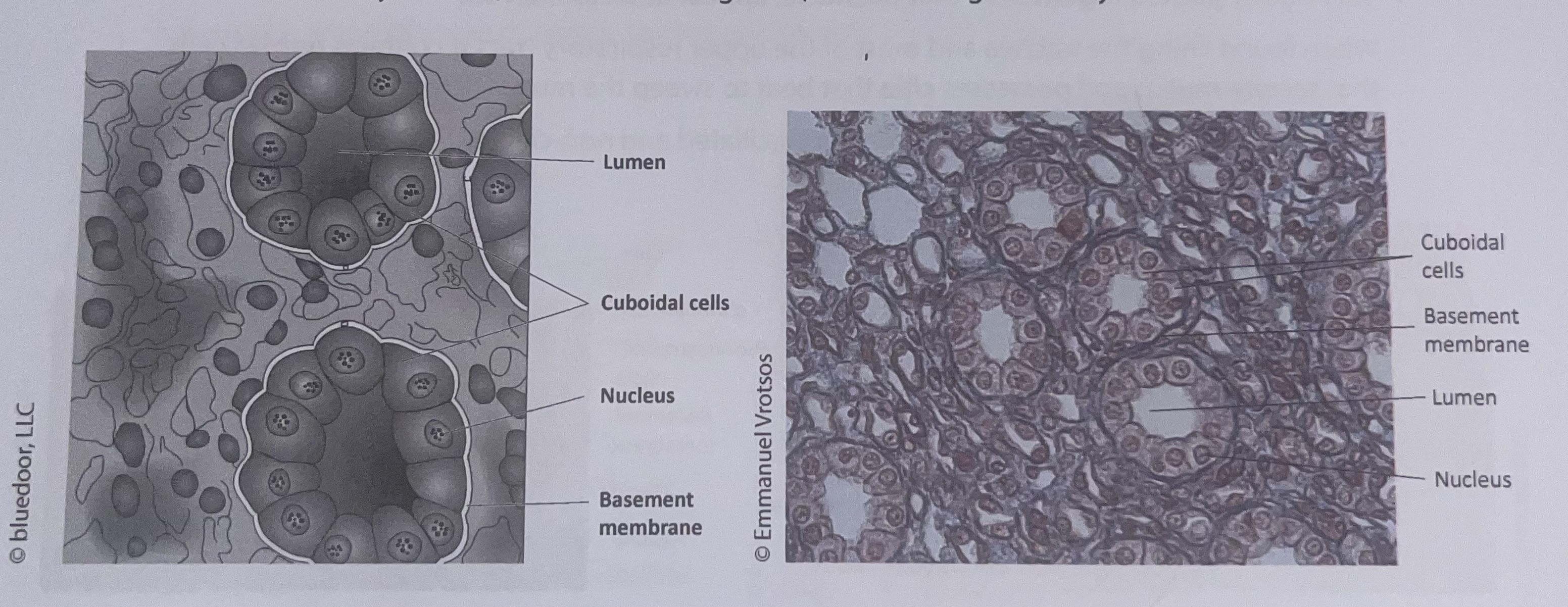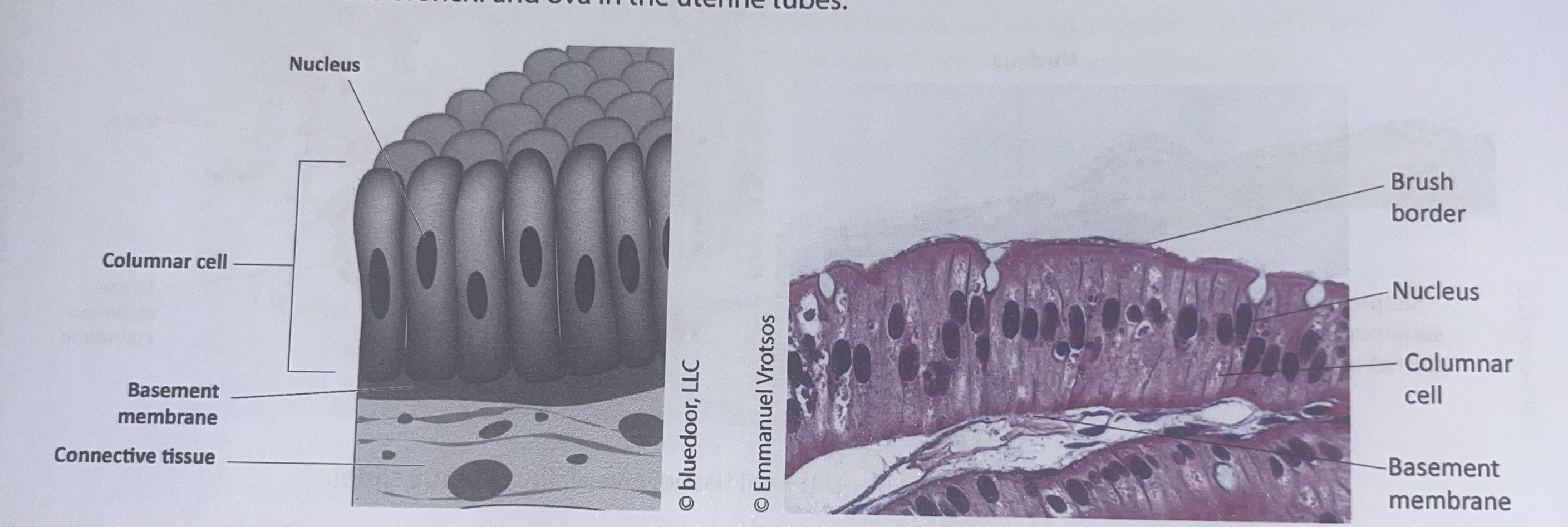BSC2085L Midterm Review
1/9
There's no tags or description
Looks like no tags are added yet.
Name | Mastery | Learn | Test | Matching | Spaced |
|---|
No study sessions yet.
10 Terms

simple squamous epithelium
single layer of flat cells
forms very thin and delicate membranes
allows for easy movement of molecules across the membrane via processes such as osmosis, diffusion, and filtration
found in the kidney glomeruli, alveoli of the lungs, lining of the heart, blood vessels, lymphatic vessels, and serous membranes

simple cuboidal epithelium
single layer of cube-shaped sizes
capable of secretion and absorption
found in kidney tubules, small ducts and covering the ovary

simple columnar epithelium
single layer of column-shaped cells
capable of secretion and absorption
found lining most of the digestive tract, gallbladder, ducts of large glands, small bronchi, and uterine tubes
microvilli
brush border
short slender cell processes that increase the surface area available for absorption of nutrients
found in sections of the digestive tract
cilia
hair-like; beat in unison to propel substances: mucus in the bronchi and ova in the uterine tubes

pseudostratified columnar epithelium
cells are only in one layer but are different heights making this tissues appear stratified
packed tightly together
found in the lining of the trachea, most of the upper respiratory tract, and male reproductive ducts
stratified squamous epithelium keratinized
many layers of flat cells that provide protection for underlying tissues
deepest layers are almost cuboidal in shaped and actively dividing
cells become flatter as they are pushed toward the surface by newer cells
upper layers are dead and filled with keratin